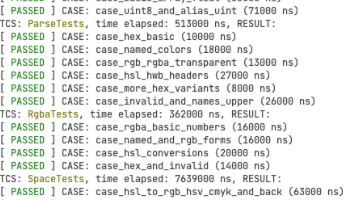[tensorflow] 多维矩阵的乘法
·
矩阵乘法本质上只能是两个二维的matrix进行叉乘,那么两个三维甚至四维的矩阵相乘是怎么做到的呢?
比如:
import tensorflow as tf
a = tf.constant(1,2,3,4)
b = tf.constant(1,2,4,6)
c = tf.matmul(a,b)
# c.shape == (1,2,3,6)查看matmul的源码:
@tf_export("linalg.matmul", "matmul")
def matmul(a,
b,
transpose_a=False,
transpose_b=False,
adjoint_a=False,
adjoint_b=False,
a_is_sparse=False,
b_is_sparse=False,
name=None):
"""Multiplies matrix `a` by matrix `b`, producing `a` * `b`.
The inputs must, following any transpositions, be tensors of rank >= 2
where the inner 2 dimensions specify valid matrix multiplication arguments,
and any further outer dimensions match.
Both matrices must be of the same type. The supported types are:
`float16`, `float32`, `float64`, `int32`, `complex64`, `complex128`.
Either matrix can be transposed or adjointed (conjugated and transposed) on
the fly by setting one of the corresponding flag to `True`. These are `False`
by default.
If one or both of the matrices contain a lot of zeros, a more efficient
multiplication algorithm can be used by setting the corresponding
`a_is_sparse` or `b_is_sparse` flag to `True`. These are `False` by default.
This optimization is only available for plain matrices (rank-2 tensors) with
datatypes `bfloat16` or `float32`.
For example:
```python
# 2-D tensor `a`
# [[1, 2, 3],
# [4, 5, 6]]
a = tf.constant([1, 2, 3, 4, 5, 6], shape=[2, 3])
# 2-D tensor `b`
# [[ 7, 8],
# [ 9, 10],
# [11, 12]]
b = tf.constant([7, 8, 9, 10, 11, 12], shape=[3, 2])
# `a` * `b`
# [[ 58, 64],
# [139, 154]]
c = tf.matmul(a, b)
# 3-D tensor `a`
# [[[ 1, 2, 3],
# [ 4, 5, 6]],
# [[ 7, 8, 9],
# [10, 11, 12]]]
a = tf.constant(np.arange(1, 13, dtype=np.int32),
shape=[2, 2, 3])
# 3-D tensor `b`
# [[[13, 14],
# [15, 16],
# [17, 18]],
# [[19, 20],
# [21, 22],
# [23, 24]]]
b = tf.constant(np.arange(13, 25, dtype=np.int32),
shape=[2, 3, 2])
# `a` * `b`
# [[[ 94, 100],
# [229, 244]],
# [[508, 532],
# [697, 730]]]
c = tf.matmul(a, b)
# Since python >= 3.5 the @ operator is supported (see PEP 465).
# In TensorFlow, it simply calls the `tf.matmul()` function, so the
# following lines are equivalent:
d = a @ b @ [[10.], [11.]]
d = tf.matmul(tf.matmul(a, b), [[10.], [11.]])
```
Args:
a: `Tensor` of type `float16`, `float32`, `float64`, `int32`, `complex64`,
`complex128` and rank > 1.
b: `Tensor` with same type and rank as `a`.
transpose_a: If `True`, `a` is transposed before multiplication.
transpose_b: If `True`, `b` is transposed before multiplication.
adjoint_a: If `True`, `a` is conjugated and transposed before
multiplication.
adjoint_b: If `True`, `b` is conjugated and transposed before
multiplication.
a_is_sparse: If `True`, `a` is treated as a sparse matrix.
b_is_sparse: If `True`, `b` is treated as a sparse matrix.
name: Name for the operation (optional).
Returns:
A `Tensor` of the same type as `a` and `b` where each inner-most matrix is
the product of the corresponding matrices in `a` and `b`, e.g. if all
transpose or adjoint attributes are `False`:
`output`[..., i, j] = sum_k (`a`[..., i, k] * `b`[..., k, j]),
for all indices i, j.
Note: This is matrix product, not element-wise product.
Raises:
ValueError: If transpose_a and adjoint_a, or transpose_b and adjoint_b
are both set to True.
"""
with ops.name_scope(name, "MatMul", [a, b]) as name:
if transpose_a and adjoint_a:
raise ValueError("Only one of transpose_a and adjoint_a can be True.")
if transpose_b and adjoint_b:
raise ValueError("Only one of transpose_b and adjoint_b can be True.")
if context.executing_eagerly():
if not isinstance(a, (ops.EagerTensor, _resource_variable_type)):
a = ops.convert_to_tensor(a, name="a")
if not isinstance(b, (ops.EagerTensor, _resource_variable_type)):
b = ops.convert_to_tensor(b, name="b")
else:
a = ops.convert_to_tensor(a, name="a")
b = ops.convert_to_tensor(b, name="b")
# TODO(apassos) remove _shape_tuple here when it is not needed.
a_shape = a._shape_tuple() # pylint: disable=protected-access
b_shape = b._shape_tuple() # pylint: disable=protected-access
if (not a_is_sparse and
not b_is_sparse) and ((a_shape is None or len(a_shape) > 2) and
(b_shape is None or len(b_shape) > 2)):
# BatchMatmul does not support transpose, so we conjugate the matrix and
# use adjoint instead. Conj() is a noop for real matrices.
if transpose_a:
a = conj(a)
adjoint_a = True
if transpose_b:
b = conj(b)
adjoint_b = True
return gen_math_ops.batch_mat_mul(
a, b, adj_x=adjoint_a, adj_y=adjoint_b, name=name)
# Neither matmul nor sparse_matmul support adjoint, so we conjugate
# the matrix and use transpose instead. Conj() is a noop for real
# matrices.
if adjoint_a:
a = conj(a)
transpose_a = True
if adjoint_b:
b = conj(b)
transpose_b = True
use_sparse_matmul = False
if a_is_sparse or b_is_sparse:
sparse_matmul_types = [dtypes.bfloat16, dtypes.float32]
use_sparse_matmul = (
a.dtype in sparse_matmul_types and b.dtype in sparse_matmul_types)
if ((a.dtype == dtypes.bfloat16 or b.dtype == dtypes.bfloat16) and
a.dtype != b.dtype):
# matmul currently doesn't handle mixed-precision inputs.
use_sparse_matmul = True
if use_sparse_matmul:
ret = sparse_matmul(
a,
b,
transpose_a=transpose_a,
transpose_b=transpose_b,
a_is_sparse=a_is_sparse,
b_is_sparse=b_is_sparse,
name=name)
# sparse_matmul always returns float32, even with
# bfloat16 inputs. This prevents us from configuring bfloat16 training.
# casting to bfloat16 also matches non-sparse matmul behavior better.
if a.dtype == dtypes.bfloat16 and b.dtype == dtypes.bfloat16:
ret = cast(ret, dtypes.bfloat16)
return ret
else:
return gen_math_ops.mat_mul(
a, b, transpose_a=transpose_a, transpose_b=transpose_b, name=name)其中由这样一段描述:
如果a和b的dimention大于2,实际上进行的会是batch_mat_mul,此时进行叉乘的是batch中的每一个切片(slice)
这就要求:
- a和b除了最后两个维度可以不一致,其他维度要相同(比如上面代码第一维和第二维分别都是1,2)
- a和b最后两维的维度要符合矩阵乘法的要求(比如a的(3,4)能和b的(4,6)进行矩阵乘法)
if (not a_is_sparse and
not b_is_sparse) and ((a_shape is None or len(a_shape) > 2) and
(b_shape is None or len(b_shape) > 2)):
# BatchMatmul does not support transpose, so we conjugate the matrix and
# use adjoint instead. Conj() is a noop for real matrices.
if transpose_a:
a = conj(a)
adjoint_a = True
if transpose_b:
b = conj(b)
adjoint_b = True
return gen_math_ops.batch_mat_mul(
a, b, adj_x=adjoint_a, adj_y=adjoint_b, name=name)
# 上述代码中batch_mat_mul的定义
def batch_mat_mul(x, y, adj_x=False, adj_y=False, name=None):
r"""Multiplies slices of two tensors in batches.
Multiplies all slices of `Tensor` `x` and `y` (each slice can be
viewed as an element of a batch), and arranges the individual results
in a single output tensor of the same batch size. Each of the
individual slices can optionally be adjointed (to adjoint a matrix
means to transpose and conjugate it) before multiplication by setting
the `adj_x` or `adj_y` flag to `True`, which are by default `False`.
The input tensors `x` and `y` are 2-D or higher with shape `[..., r_x, c_x]`
and `[..., r_y, c_y]`.
The output tensor is 2-D or higher with shape `[..., r_o, c_o]`, where:
r_o = c_x if adj_x else r_x
c_o = r_y if adj_y else c_y
It is computed as:
output[..., :, :] = matrix(x[..., :, :]) * matrix(y[..., :, :])
Args:
x: A `Tensor`. Must be one of the following types: `bfloat16`, `half`, `float32`, `float64`, `int32`, `int64`, `complex64`, `complex128`.
2-D or higher with shape `[..., r_x, c_x]`.
y: A `Tensor`. Must have the same type as `x`.
2-D or higher with shape `[..., r_y, c_y]`.
adj_x: An optional `bool`. Defaults to `False`.
If `True`, adjoint the slices of `x`. Defaults to `False`.
adj_y: An optional `bool`. Defaults to `False`.
If `True`, adjoint the slices of `y`. Defaults to `False`.
name: A name for the operation (optional).
Returns:
A `Tensor`. Has the same type as `x`.
"""

新一代开源开发者平台 GitCode,通过集成代码托管服务、代码仓库以及可信赖的开源组件库,让开发者可以在云端进行代码托管和开发。旨在为数千万中国开发者提供一个无缝且高效的云端环境,以支持学习、使用和贡献开源项目。
更多推荐
 已为社区贡献5条内容
已为社区贡献5条内容







所有评论(0)